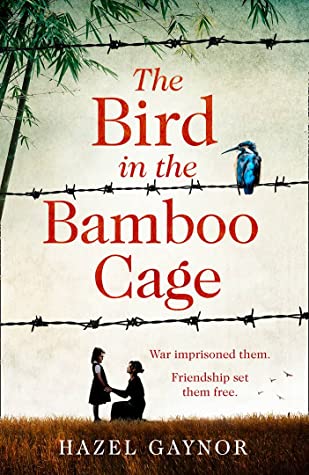
Title: The Bird in the Bamboo Cage
Author: Hazel Gaynor
Published: 20th August 2020
Pages: 384
Setting: WWII China
I want to begin this review by saying that I listened to The Bird in the Bamboo Cage on audiobook – and if you’re someone who enjoys listening to audiobooks, I would definitely recommend reading this book in audio format. Having listened to the phenomenal performances given by both narrators (Imogen Church and Rosie Jones), I couldn’t imagine experiencing the story any other way.
The Bird in the Bamboo Cage is a quiet, compelling character study about human endurance and hope in the bleakest of circumstances. It’s a WWII story with a different angle to the usual Western-centric take on the conflict, as it’s set at a missionary school in Yantai (formerly known as Chefoo), China. The protagonists are Elspeth Kent, a British teacher at the school, and Nancy Plummer, a ten-year-old British pupil.
It’s difficult to describe much of the plot, as this is very much a character-driven novel – but at its core, The Bird in the Bamboo Cage is about the effects of the Japanese occupation of China on the inhabitants of the missionary school. With the children’s parents away, and their extended families scattered across the globe, the teachers are the sole familiar adult figures in the children’s lives – and through Elspeth’s voice Hazel Gaynor masterfully explores the sometimes overwhelming sense of responsibility these teachers face as they become not only teachers, but also surrogate parents to these children in the most difficult of circumstances.
A key theme running through this novel is the Girl Guiding movement. Nancy and her friends belong to a Brownies group at the school, and at the beginning of the story they are excited to be transitioning up to Guides. When the occupation begins, their Guides meetings shift from a fun way to socialise and learn skills to a lifeline of normality and focus amid ever-increasing chaos, not just for the pupils but also the teachers running the meetings. Snippets of the Guides handbook are quoted throughout the book, and it’s fascinating to see how Hazel Gaynor cleverly weaves elements of these quotes into the narrative.
This novel definitely goes to some dark and emotional places, and there are a couple of utterly heartbreaking moments – but at its heart it is a story about togetherness, and community, and people supporting each other through incredible hardship. Although it’s not action-packed, I found myself completely gripped by Elspeth and Nancy’s stories, and often caught myself thinking about the characters even when I wasn’t actively listening to the book.
I would wholeheartedly recommend The Bird in the Bamboo Cage for fans of WWII historical fiction looking for a slightly different angle on the conflict. Hazel Gaynor is quickly becoming a firm favourite historical fiction author of mine, and I look forward to my next read of hers.
